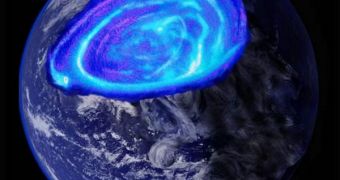Scientists have recently determined in a new study that the magnetic field surrounding our planet when the Earth was still in its infancy was most likely very weak. The experts estimate that it may have had an intensity equal to half of its current one. In additional findings, they have also learned that the age of the field itself was miscalculated. Their estimates show that this protective layer – which eventually allowed for life to develop on the surface – appeared some 200 million years earlier than initially established. These discoveries bear significant implications for planetary science, and may help experts determine the exact amount of water that existed on Earth at the time, Space reports.
One of the consequences of such a low-intensity magnetic field, the team says, may have been the development of very beautiful and widely spread auroras, which may have formed at latitudes as low as New York City's, on the East Coast of the modern United States. But the downturn is that large amounts of solar radiations probably penetrated it, preventing life from forming and evolving, or at least causing severe mutations in existing organisms, if any existed.
Physicists explain that the solar winds emanating from the Sun's corona slam into this protective field, but fail to get through on account of the fact that its intensity level is very high. Only the largest and rarest of emissions manage to pass, and, in these instances, they cause massive damage to power grids, communication systems, satellites, and, more recently, the International Space Station (ISS). The only things that stand between our society and this happening are the turbulent, convective motions of the planet's molten core, which generate the protective magnetic field.
According to the new investigation, which was conducted by researchers at the University of Rochester, led by expert John Tarduno, and colleagues at the University of KwaZulu-Natal in South Africa, the very existence of the magnetic field may have promoted the development of life. Details of their work are published in the March 5 issue of the top journal Science. If the findings are confirmed, then scientists could develop new methods for analyzing the conditions that eventually led to the development of life as we know it.

 14 DAY TRIAL //
14 DAY TRIAL //